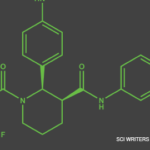ADVERSE REACTIONS
The most common adverse reactions (≥5% of patients and higher in the TAVNEOS group vs. prednisone group) were: nausea, headache, hypertension, diarrhea, vomiting, rash, fatigue, upper abdominal pain, dizziness, blood creatinine increased, and paresthesia.
DRUG INTERACTIONS
Avoid coadministration of TAVNEOS with strong and moderate CYP3A4 enzyme inducers. Reduce TAVNEOS dose when co-administered with strong CYP3A4 enzyme inhibitors to 30 mg once daily. Monitor for adverse reactions and consider dose reduction of certain sensitive CYP3A4 substrates.
ad goes here:advert-1
ADVERTISEMENT
SCROLL TO CONTINUE
Please see Full Prescribing Information and Medication Guide for TAVNEOS.



